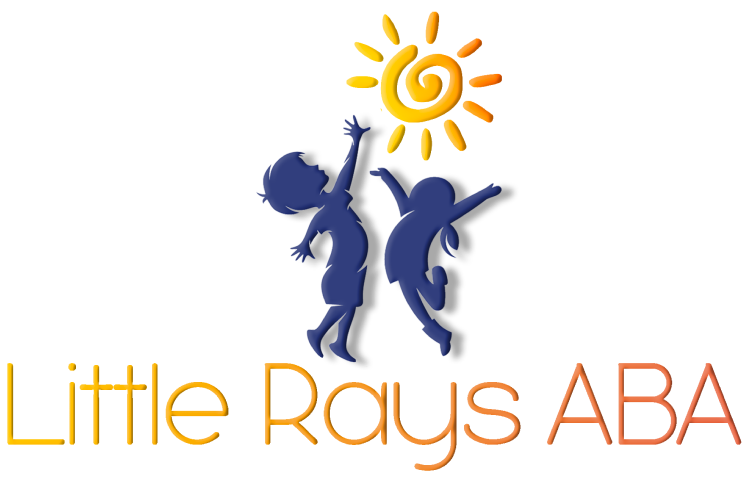Sulforaphane for Autism
Autism spectrum disorder (ASD) is a complex neurodevelopmental condition that affects communication, behavior, and social interactions. While behavioral therapies like Applied Behavior Analysis (ABA) remain the gold standard for autism support, some parents and researchers are exploring natural compounds that may help with symptoms. One such compound gaining attention is sulforaphane.
Sulforaphane is a natural chemical found in cruciferous vegetables like broccoli, Brussels sprouts, and kale. Research suggests that sulforaphane has anti-inflammatory, antioxidant, and detoxification properties that may help improve certain autism-related symptoms. But how effective is it, and what does the science say? Let's explore the potential benefits and risks of sulforaphane for autism.
What Is Sulforaphane?
Sulforaphane is a sulfur-containing compound derived from glucoraphanin, a substance found in cruciferous vegetables. When these vegetables are chopped, chewed, or cooked, sulforaphane is activated by an enzyme called myrosinase.
Health Benefits of Sulforaphane
Research suggests that sulforaphane has several health benefits, including:
- Antioxidant properties: Helps reduce oxidative stress, which has been linked to neurological conditions like autism.
- Anti-inflammatory effects: May lower brain inflammation, which plays a role in autism-related challenges.
- Detoxification support: Aids in the body's natural detoxification process by activating protective enzymes.
- Neuroprotective benefits: May support brain function and cognitive health by reducing cellular damage.
The Connection Between Sulforaphane and Autism
Researchers became interested in sulforaphane for autism after observing fever-related improvements in some autistic individuals. Studies found that when individuals with autism had a fever, their symptoms—such as social engagement and verbal communication—temporarily improved. Sulforaphane activates similar heat shock proteins in the body, leading researchers to explore its potential therapeutic effects for autism.
Key Research Findings
1. The 2014 Study on Sulforaphane and Autism
A groundbreaking study published in PNAS (Proceedings of the National Academy of Sciences) in 2014 investigated the effects of sulforaphane on individuals with autism. The study included 44 males (ages 13-27) with moderate to severe autism.
- Participants were given sulforaphane supplements (from broccoli sprout extracts) for 18 weeks.
- Improvements were observed in social interaction, verbal communication, and behavior.
- Some participants showed better eye contact, reduced irritability, and increased engagement.
- Once supplementation stopped, some benefits gradually declined, indicating the need for continuous intake.
2. Follow-Up Studies
Later studies and clinical trials have supported these findings, with some reporting:
- Improved executive functioning (cognitive processes like memory and focus).
- Reduction in repetitive behaviors.
- Enhanced social responsiveness.
While these results are promising, more research is needed to determine the long-term safety and effectiveness of sulforaphane for autism.
How Sulforaphane Works in the Body
Sulforaphane affects multiple pathways in the body that may contribute to improvements in autism symptoms:
- Activates Heat Shock Proteins (HSPs): These proteins help protect neurons from damage and support cellular repair.
- Reduces Oxidative Stress: Many individuals with autism have higher oxidative stress, which can contribute to inflammation and cognitive difficulties.
- Supports Detoxification: Sulforaphane boosts the body's ability to eliminate toxins that may contribute to neurological dysfunction.
- Regulates Brain Chemistry: May help balance neurotransmitters (such as glutamate and dopamine) that play a role in mood and behavior.
Sources of Sulforaphane
Sulforaphane is naturally present in cruciferous vegetables. The highest concentrations are found in:
- Broccoli sprouts (up to 50 times more sulforaphane than mature broccoli!)
- Brussels sprouts
- Kale
- Cabbage
- Cauliflower
Broccoli Sprouts: The Best Source
Many researchers focus on broccoli sprouts because they contain significantly higher amounts of glucoraphanin, the precursor to sulforaphane. Consuming raw or lightly steamed sprouts ensures maximum sulforaphane activation.
Sulforaphane Supplements: Are They Safe?
If dietary sources are not sufficient, sulforaphane supplements are available in capsule or extract form. However, not all supplements are equal, and their effectiveness depends on:
- Bioavailability: Some supplements contain stabilized sulforaphane, while others require activation in the body.
- Additional enzymes: Look for supplements that include myrosinase, which helps activate sulforaphane.
- Dosage and purity: Always choose high-quality, third-party-tested products.
Potential Side Effects
Sulforaphane is generally considered safe, but some individuals may experience:
- Digestive issues (bloating, gas, or upset stomach)
- Increased liver enzyme levels (in rare cases)
- Possible drug interactions (consult a doctor if taking medications)
Always consult with a healthcare provider before starting any new supplement, especially for children.
Should You Try Sulforaphane for Autism?
Sulforaphane shows promising potential for improving autism-related symptoms, but it is not a cure. It should be considered as part of a comprehensive approach that includes:
- Behavioral therapy (ABA therapy)
- Speech and occupational therapy
- A balanced diet rich in whole foods
- Regular medical check-ups
If you're interested in trying sulforaphane for autism, consult a healthcare professional to determine the right approach.
Conclusion
At Little Rays ABA, we support families in exploring evidence-based interventions that enhance the well-being of children with autism. Contact us to learn more about personalized therapy programs that help children thrive.
Frequently Asked Questions
Can sulforaphane cure autism?
No, sulforaphane is not a cure for autism. However, research suggests it may help improve certain symptoms, such as social interaction and verbal communication.
How much sulforaphane should a child with autism take?
There is no universal dosage for sulforaphane in autism treatment. Clinical trials used varying doses, so it's best to consult a healthcare professional for guidance.
What foods contain the most sulforaphane?
Broccoli sprouts are the richest natural source of sulforaphane, followed by other cruciferous vegetables like kale, Brussels sprouts, and cauliflower.
Sources:
- https://www.webmd.com/vitamins/ai/ingredientmono-1070/sulforaphane
- https://www.healthline.com/nutrition/sulforaphane
- https://www.pnas.org/doi/10.1073/pnas.1416940111
- https://www.nature.com/articles/s41392-020-00233-4
- https://pmc.ncbi.nlm.nih.gov/articles/PMC23369/
Unlock Your Child's Potential with Expert ABA Therapy!
At Little Rays ABA, we provide compassionate, evidence-based ABA therapy to help children with autism thrive. Our personalized approach fosters growth in communication, social skills, and independence.
Get In Touch With Us Today to Get Started With ABA Therapy!
Related Posts
MENU
GET IN TOUCH
7117 San Salvador Dr Boca Raton, FL 33433
3200 Collins Ave Miami Beach, FL 33140





